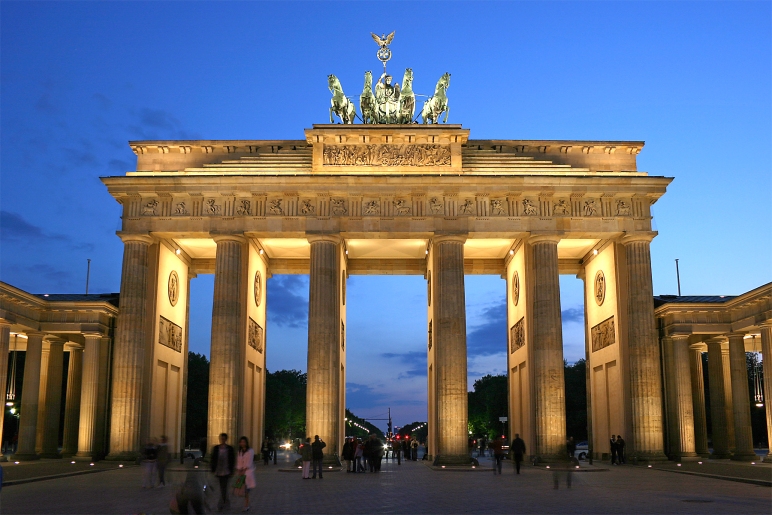MacGregor, Neil. Germany: Memories of a Nation, Alfred A. Knopf, New York, 2015 (606pp., 420 illustrations, 8 full-color maps, $40).
Neil MacGregor is director of the illustrious British Museum on Russell Square in London. Previously the director of the National Gallery, his books “The History of the World in 100 Objects” and “Shakespeare’s Restless World” have been widely translated and admired. His latest book, “Germany: Memories of a Nation” was first conceived as a temporary exhibition to be presented by the British Museum during early 2015 in partnership with BBC Radio which provided travel funds, documentary assistance, and script production services. The partnership resulted in an admirable radio series, the British Museum exhibition, and now a massive and beautifully rendered volume full of intelligent observation, art prints, documentary photographs and maps.
The central argument of the book is that “history in Germany is concerned not only with the past but, unlike other European countries, looks forward.” This thesis, while not readily understandable standing alone, makes sense when one understands that German history over the past five hundred years has been uniquely unstable, almost a “project” in the making. After the fall of the Roman Empire, King Charles (Charlemagne) struggled to create a healthy state on the ruins of the feudal economic system, a state that finally encompassed nearly all of what are now eastern France, Switzerland, northern Italy, and much of Germany just east of the Rhine and north of the Danube. By the late Middle Ages, this territory came to be known as the Holy Roman Empire, a collection of principalities, duchies, Kingdoms and prelate-prince estates, held together mainly by the fact that its inhabitants spoke either Low or High German, and were mostly Catholics. Its Holy Roman Emperor was beholden to “electors” rather than inheriting his position by birth.
“Germany: Memories of a Nation” is much more than popular history for the coffee table. Proceeding in relatively short chapters that are lavishly illustrated, a layered and nuanced argument is advanced that Germany congealed through the use of a common language and shared troubles; that Germany’s history is particularly diffuse, but that, with patience, common threads emerge that all Germans intuitively understand. One must remember that the Germany (in its 17th century incarnation) included Konigsberg (now Kaliningrad in the Russian Federation) and Strasbourg (now in France). Digging deep, the series promoters uncover subtle connections between such far-flung subjects as Goethe, the rise of the Hohenzollerns, Charlemagne, sausage and beer, Meissen porcelain, Hansel and Gretel, metalwork (in particular, the Volkswagen), popular uprisings, peasant revolts, Thomas Mann and Emmanuel Kant, Konigsberg, Strasbourg, Dresden and the Brandenburg Gate, the Thirty Years War, Buchenwald, and many other topics like art (Kandinsky and Kollwitz), literature (Kafka and Mann) and music (Mahler and Wagner, of course). Strangely absent though is any reference to Alexander von Humboldt! “Germany: Memories of a Nation” is an astonishing work of book art too.
 Four-color prints, unique drawings, and historical portraits plentifully adorn every chapter. Printed on quality paper, with a generous index and bibliography, the book astounds the eye and mind. A bit heavy in the hand, it might have been better in a larger format. Even so, for a “series” product, it is a treasure.
Four-color prints, unique drawings, and historical portraits plentifully adorn every chapter. Printed on quality paper, with a generous index and bibliography, the book astounds the eye and mind. A bit heavy in the hand, it might have been better in a larger format. Even so, for a “series” product, it is a treasure.

